|
|
|
HOME
|
US Navy -
ships
|
US Navy - air
units
|
USMC - air
units
|
International
Navies
|
Weapon Systems
|
Special Reports |
|
|
|
|
|
United Kingdom - Royal Navy Leander (Type 12I) class Frigate |
|
|
 |
|
|
| Ships: |
|
Batch 1: F 109 HMS Leander (1963) F 114 HMS Ajax (1963) F 104 HMS Dido (1963) F 127 HMS Penelope (1963) F 10 HMS Aurora (1964) F 15 HMS Euryalus (1964) F 18 HMS Galatea (1964) F 38 HMS Arethusa (1965) F 39 HMS Naiad (1965) F 28 HMS Cleopatra (1966) Batch 2: F 42 HMS Phoebe (1966) F 45 HMS Minerva (1966) F 40 HMS Sirius (1966) F 52 HMS Juno (1966) F 56 HMS Argonaut (1967) F 47 HMS Danae (1967) Batch 3: F 58 HMS Hermione (1969) F 57 HMS Andromeda (1968) F 60 HMS Jupiter (1969) F 69 HMS Bacchante (1969) F 75 HMS Charybdis (1969) F 71 HMS Scylla (1970) F 12 HMS Achilles (1970) F 16 HMS Diomede (1971) F 70 HMS Apollo (1972) F 72 HMS Ariadne (1973) |
| Specifications: |
|
Length: 113,4 meters (372 ft)
Beam: Batch 1&2 = 12,5 meters (41 ft) / Batch 3 = 13,1 meters (43 ft) Draft: 4,5 meters (15 ft) Displacement: 2960 tons / later 3300 tons (full load) Speed: 27 knots (50 km/h) Range: 4000 NM (7400 km) at 15 knots (28 km/h) Complement: 260 Propulsion: 2 x Babcock & Wilcox oil-fired boilers 2 x geared steam turbines (30000 hp) 2 shafts / 2 propellers Armament: initial - Mark 6 gun / SEACAT: 1 x Mark 6 - 4.5 inch (114 mm) twin gun 1 x GWS-22 Seacat SAM missile launching system 2 x 20mm single guns 2 x Mark 10 - LIMBO anti-submarine mortars IKARA / SEACAT: 1 x Ikara anti-submarine missile launcher 2 x GWS-22 Seacat SAM missile launching systems 2 x 40mm single guns 2 x STWS-1 324mm (12.75 in) triple torpedo tubes for Mk-46 and Stingray ASW torpedoes 1 x Mark 10 - LIMBO anti-submarine mortar EXOCET / SEACAT: 4 x MM.38 Exocet anti-ship missile launcher 3 x GWS-22 Seacat SAM missile launching systems 2 x 40mm single guns 2 x STWS-1 324mm (12.75 in) triple torpedo tubes for Mk-46 and Stingray ASW torpedoes EXOCET / SEAWOLF: 4 x MM.38 Exocet anti-ship missile launcher 1 x GWS-25 sextuple Seawolf SAM missile launching systems 2 x 20mm single AA guns 2 x STWS-1 324mm (12.75 in) triple torpedo tubes for Mk-46 and Stingray ASW torpedoes Aviation: flight deck and hangar for 1 helicopter (initial & Batch 1 = Westland Wasp / Batch 2 & 3 = Westland Lynx HAS Mk.2) |
|
|
|
The Leander-class, or Type 12I frigates (Type 12 improved),
comprising twenty-six vessels, was among the most numerous and
long-lived classes of frigate in the Royal Navy's modern history.
The class was built in three batches between 1959 and 1973. It had
an unusually high public profile, due to the popular BBC television
drama series Warship. The Leander silhouette became synonymous with
the Royal Navy through the 1960s until the 1980s. Only two Leander
Class Frigates survive today, serving in the Ecuadorian Navy as of
February 2015. Design: On 7 March 1960, the Civil Lord of the Admiralty C. Ian Orr-Ewing stated that the "Type 12 Whitby-class anti-submarine frigates are proving particularly successful ... and we have decided to exploit their good qualities in an improved and more versatile ship. This improved Type 12 will be known as the Leander class. The hull and steam turbine machinery will be substantially the same as for the Whitbys. The main new features planned are a long-range air warning radar, the Seacat anti-aircraft guided missile, improved anti-submarine detection equipment and a light-weight helicopter armed with homing torpedoes. We shall also introduce air conditioning and better living conditions." The 1963 edition of Jane's Fighting Ships described it as a "mainly anti-submarine but flexible and all purpose type". "The Leander class have the same hull and substantially the same steam turbine machinery as the Whitby class, but are a revised and advanced design and will fulfil a composite anti-submarine, anti-aircraft and air direction role. The 40mm guns will eventually be replaced by Seacat ship-to-air launchers. The ships are equipped with VDS (Variable Depth Sonar), formerly known as dipping asdic." The Y160 boiler variant used on the Batch 3 Leanders (such as Jupiter) also incorporated steam atomisation equipment on the fuel supply so the diesel fuel entering the boilers via the three main burners was atomised into a fine spray for better flame efficiency. Some ships with Y100 Boilers were also converted to steam atomisation, HMS Cleopatra being one of them. The superheat temperature of the Y160 was controlled manually by the boiler room petty officer of the watch between 750–850 °F (399–454 °C) and the steam supplied to the main turbines was at a pressure of 550 psi (3,800 kPa). The Leander-class frigates did have Babcock & Wilcox boilers but of a more conventional two-drum design, one water drum and one steam drum, much like a Yarrow boiler without the second water drum. The water drum was offset to one side and below the furnace and steam drum. The two boilers fitted were 'handed' with the water drum inboard on both. Many Leanders had six burner furnaces (known as Five and a Half Boilers) and the output was varied by altering the number of burners in use. Midlife major refits: The entire class was given a standard weapons fit when built, with a 4.5in gun mount, Seacat missile system and Limbo ASW mortar. However, advances in weapons systems led to a number of different conversions being undertaken on various members of the class. This saw the class grouped into four broad batches: - IKARA installation of the Ikara ASW missile system in place of the 4.5in gun mount. - EXOCET/SEACAT installation of Exocet anti-ship missile system in place of 4.5in gun mount, plus additional Seacat surface-to-air missile systems. - EXOCET/SEAWOLF installation of Exocet anti-ship missile system in place of 4.5in gun mount; replacement of Seacat with single Seawolf surface-to-air missile system. Gun - retained 4.5in gun mount and Seacat missile system. IKARA conversion: Eight of the first ten Leanders were given the so-called "Batch 1" or "Ikara" conversion, which saw the Ikara anti-submarine warfare missile installed in place of the 4.5in gun, plus an additional Seacat system. EXOCET / SEACAT conversion: Two of the Leanders with Y-100 machinery, and five out of the six with Y-136 machinery, were given the so-called "Batch 2" or "Exocet" conversion. This conversion gave them Exocet anti-shipping missiles in place of the 4.5in gun mount, 2 additional Seacat systems, and the ability to operate the Lynx helicopter. Navigational training ship conversion: Juno, commissioned 18 July 1967 was converted to serve as a navigational training ship. Work at Rosyth began in January 1982 and completed in February 1985. EXOCET / SEAWOLF conversion: The Seawolf conversion gave the broad-beamed Leanders Exocet anti-shipping missiles in place of the 4.5in mounting, a Seawolf missile system in place of Seacat, Sonar 2016, and the ability to operate the Lynx helicopter. Only five of the broad-beamed Leanders were converted to carry Seawolf due to costs (£70 million for each refit) and, as a lesser consideration, to retain some ships capable of naval gunfire support. Towed array conversions: In 1981 the Admiralty said that they intended to devote "substantial resources to improving the effectiveness of the sensors and anti-submarine weapons ... This includes the new passive towed array system that we hope to introduce into service next year." The former destroyer Matapan and the frigate Lowestoft were used for testing prototypes in 1978-81. It was planned to install them on Rothesay conversions, but this was not possible due to industrial strikes. Scheduling then made it easier to fit them on board four of the Batch II Leanders. "Compensation for the additional 70 tons of top weight included lowering the Exocet launchers. This interesting quartet was to have been followed by five Batch III Leanders, but the latter fell foul of the Nott cancellations. A fifth Leander, the Ikara-carrying HMS Arethusa, was fitted with a towed array in 1985, the year the towed-array trials ship Lowestoft was withdrawn from service." Admiral Sir Julian Oswald said to the Defence Committee in 1989, "in order to capitalise on the really very exciting and important development of towed arrays, we had to get them to sea as soon as we could. The only sensible, cost-effective option open to us was to take some relatively older ships - the Leanders - and convert them quickly to the towed array. We have done that with great success, and the peacetime patrols have achieved some remarkable results, but there has been a price to pay because of the age of those ships." In general, "as a ship gets older it tends to get noisier - the hull and also the propulsion system". At the same Defence Committee meeting, Oswald spoke "to counter the presumption that older ships get noisier. That is not necessarily true and it is not true, in my experience, in the case of the Leanders because understanding of ship generated noise is improving all the time and our techniques for countering it are improving - our noise monitoring and so on - so, despite the fact that these ships are getting older, they are in many cases managing to improve their performance with regard to ship noise." Captain Geoffrey Biggs said "the Leanders are remarkably quiet in operation and our experience has been that they have made excellent towed-array platforms despite the rather short notice of actually getting the towed-array programme together to start with. They actually perform very well." Five ships were converted to use Waverley Type 2031(I) towed array (passive search very low frequency) - Phoebe, Cleopatra, Argonaut, Sirius, Arethusa. The Leander design or derivatives of it were built for other navies: Royal New Zealand Navy as the Leander class Chilean Navy: Condell class Royal Australian Navy: River class Indian Navy: Nilgiri class Royal Netherlands Navy: Van Speijk class source: wikipedia |
|
|
| Ships: |
|
F 109 HMS Leander Builder: Harland & Wolff Ltd., Belfast Laid down: April 10, 1959 Launched: June 28, 1961 Commissioned: March 27, 1963 Ikara conversion: June 1970 - January 1973 Decommissioned: April 1987 Fate: sunk as a target 1989 F 104 HMS Dido Builder: Yarrow & Co. Ltd., Glasgow Laid down: December 2, 1959 Launched: December 22, 1961 Commissioned: September 18, 1963 Ikara conversion: July 1975 - October 1978 Decommissioned: ? Fate: sold to New Zealand 1983 / renamed HMNZS Southland F 127 HMS Penelope Builder: Vickers-Armstrongs Shipbuilders Ltd., Newcastle Laid down: March 14, 1961 Launched: August 17, 1962 Commissioned: October 31, 1963 Exocet conversion: November 1981 - January 1982 Decommissioned: 1991 Fate: sold to Ecuador 1991 / renamed BAE Presidente Eloy Alfaro (FM 01) F 114 HMS Ajax Builder: Cammell Laird & Co. Shipbuilders Ltd., Birkenhead Laid down: October 19, 1959 Launched: August 16, 1962 Commissioned: December 10, 1963 Ikara conversion: October 1970 - February 1974 Decommissioned: May 31, 1985 Fate: sold for scrap / scrapped at Millom, Cumbria 1988 F 10 HMS Aurora Builder: John Brown & Co. Ltd., Clydebank Laid down: June 1, 1961 Launched: November 28, 1962 Commissioned: April 9, 1964 Ikara conversion: December 1974 - February 1976 Decommissioned: April 28, 1987 Fate: sold for scrap / scrapped at Millom, Cumbria 1990 F 18 HMS Galatea Builder: Swan Hunter & Wigham Richardson Ltd., Wallsend-on-Tyne Laid down: December 29, 1961 Launched: May 23, 1963 Commissioned: April 25, 1964 Ikara conversion: October 1971 - September 1974 Decommissioned: January 31, 1987 Fate: sunk as a target - July 21, 1988 F 15 HMS Euryalus Builder: Scotts Shipbuilding & Engineering Co. Ltd., Greenock, Scotland Laid down: November 2, 1961 Launched: June 6, 1963 Commissioned: September 16, 1964 Ikara conversion: May 1973 - March 1976 Decommissioned: March 31, 1989 Fate: sold for scrap 1990 F 39 HMS Naiad Builder: Yarrow & Co. Ltd., Glasgow Laid down: October 30, 1962 Launched: November 4, 1963 Commissioned: March 15, 1965 Ikara conversion: January 1973 - June 1975 Decommissioned: April 1987 Fate: sunk as a target 1990 F 38 HMS Arethusa Builder: JS White & Co. Ltd., Cowes, Isle of Wight Laid down: September 7, 1962 Launched: November 5, 1963 Commissioned: November 24, 1965 Ikara conversion: September 1973 - April 1977 Towed array conversion: May 1985 - February 1986 Decommissioned: April 4, 1989 Fate: sunk as a target 1991 F 28 HMS Cleopatra Builder: HM Dockyard, Devonport Laid down: June 19, 1963 Launched: March 25, 1964 Commissioned: January 4, 1966 Exocet conversion: July 1973 - December 1975 Towed array conversion: January 1982 - April 1983 Decommissioned: January 31, 1992 Fate: sold for scrap 1993 F 42 HMS Phoebe Builder: Alexander Stephen & Sons Ltd., Linthouse, Glasgow Laid down: June 3, 1963 Launched: July 8, 1964 Commissioned: April 15, 1966 Exocet conversion: August 1974 - April 1977 Towed array conversion: February 1981 - July 1982 Decommissioned: February 14, 1991 Fate: sold for scrap 1992 F 45 HMS Minerva Builder: Vickers Ltd., Shipbuilding Group, Newcastle Laid down: July 26, 1963 Launched: December 19, 1964 Commissioned: May 14, 1966 Exocet conversion: December 1975 - April 1979 Decommissioned: March 1992 Fate: sold for scrap July 1993 F 40 HMS Sirius Builder: HM Dockyard, Portsmouth, Hampshire Laid down: August 9, 1963 Launched: September 22, 1964 Commissioned: June 15, 1966 Exocet conversion: March 1975 - February 1978 Towed array conversion: April 1985 - December 1985 Decommissioned: February 27, 1993 Fate: sunk as a target 1998 F 52 HMS Juno Builder: JI Thornycroft Ltd., Southampton Laid down: July 16, 1964 Launched: November 24, 1965 Commissioned: July 18, 1967 Navigational training ship conversion: January 1982 - February 1985 Decommissioned: November 4, 1992 Fate: sold for scrap 1994 F 56 HMS Argonaut Builder: Hawthorn Leslie, Hebburn, Tyne and Wear Laid down: November 27, 1964 Launched: February 8, 1966 Commissioned: August 17, 1967 Exocet conversion: February 1976 - March 1980 Towed array conversion: August 1982 - November 1983 Decommissioned: March 31, 1993 Fate: scrapped in 1995 F 47 HMS Danae Builder: HM Dockyard, Devonport Laid down: December 16, 1964 Launched: October 31, 1965 Commissioned: October 10, 1967 Exocet conversion: August 1977 - April 1981 Decommissioned: 1991 Fate: sold to Ecuador / renamed BAE Moran Valverde (FM 02) F 75 HMS Charybdis Builder: Harland & Wolff Ltd., Belfast Laid down: January 27, 1967 Launched: February 28, 1968 Commissioned: June 2, 1969 Exocet/Seawolf conversion: June 1979 - July 1982 Decommissioned: September 30, 1991 Fate: sunk as a target - June 11, 1993 F 58 HMS Hermione Builder: Yarrow & Co. Ltd., Glasgow Laid down: December 6, 1965 Launched: April 26, 1967 Commissioned: July 11, 1969 Exocet/Seawolf conversion: January 1980 - December 1983 Decommissioned: June 30, 1992 Fate: sold for scrap 1997 / scrapped in India F 60 HMS Jupiter Builder: Yarrow & Co. Ltd., Glasgow Laid down: October 3, 1966 Launched: September 4, 1967 Commissioned: August 9, 1969 Exocet/Seawolf conversion: January 1980 - October 1983 Decommissioned: April 22, 1992 Fate: sold for scrap 1997 / scrapped in India F 69 HMS Bacchante Builder: Vickers Ltd., Shipbuilding Group, Newcastle Laid down: October 27, 1966 Launched: February 29, 1968 Commissioned: October 17, 1969 Decommissioned: 1982 Fate: sold to New Zealand / renamed HMNZS Wellington (F 69) F 57 HMS Andromeda Builder: HM Dockyard, Portsmouth, Hampshire Laid down: May 25, 1966 Launched: May 24, 1967 Commissioned: December 2, 1968 Exocet/Seawolf conversion: January 1978 - February 1981 Decommissioned: June 1993 Fate: sold to India 1995 / renamed INS Krishna (F 46) F 71 HMS Scylla Builder: HM Dockyard, Devonport Laid down: May 17, 1967 Launched: August 8, 1968 Commissioned: February 12, 1970 Exocet/Seawolf conversion: November 1980 - December 1984 Decommissioned: December 1993 Fate: sunk off Cornwall as an artificial reef on March 27, 2004 F 12 HMS Achilles Builder: Yarrow & Co. Ltd., Glasgow Laid down: December 1, 1967 Launched: November 21, 1968 Commissioned: July 9, 1970 Decommissioned: January 1990 Fate: sold to Chile / renamed CS Ministro Zenteno (PFG 08) F 16 HMS Diomede Builder: Yarrow & Co. Ltd., Glasgow Laid down: January 30, 1968 Launched: April 15, 1969 Commissioned: April 2, 1971 Decommissioned: May 31, 1988 Fate: sold to Pakistan 1988 / renamed PNS Shamsher (F 263) F 70 HMS Apollo Builder: Yarrow & Co. Ltd., Glasgow Laid down: May 1, 1969 Launched: October 15, 1970 Commissioned: May 28, 1972 Decommissioned: August 31, 1988 Fate: sold to Pakistan 1988 / renamed PNS Zulfiquar (F 262) F 72 HMS Ariadne Builder: Yarrow & Co. Ltd., Glasgow Laid down: November 1, 1969 Launched: September 10, 1971 Commissioned: February 10, 1973 Decommissioned: May 1992 Fate: solt to Chile / renamed CS General Baquedano (PF 09) |
|
images |
 HMS Aurora (F 10) 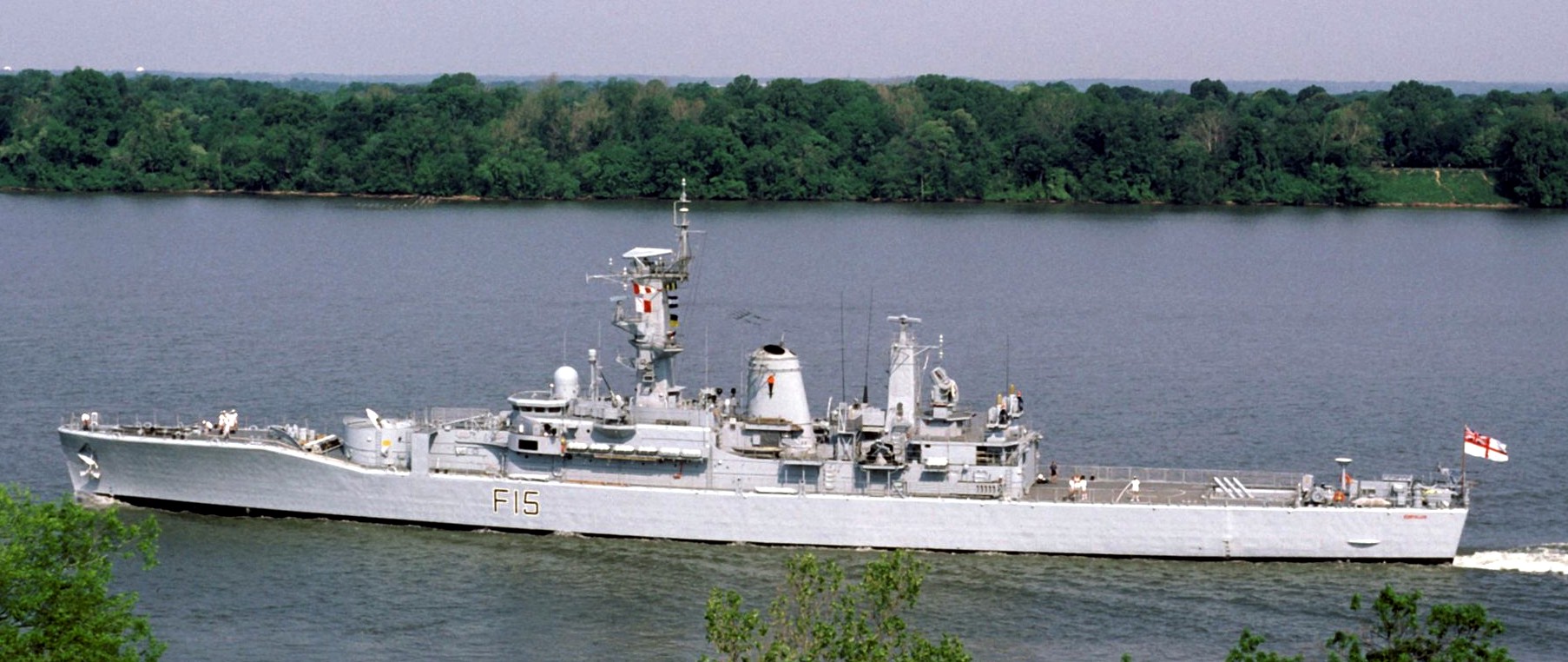 HMS Euryalus (F 15) 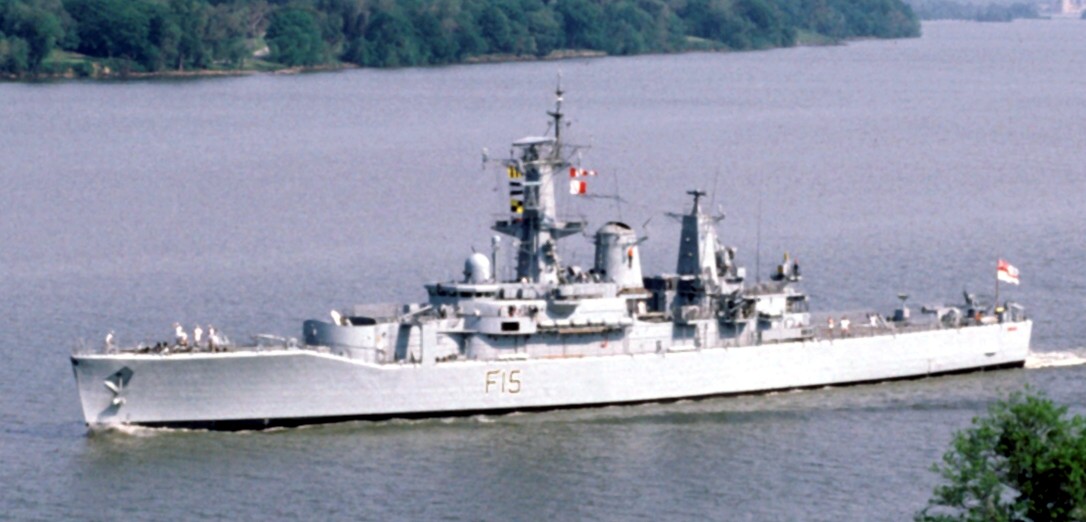 HMS Euryalus (F 15)  HMS Euryalus (F 15)  HMS Naiad (F 39)  HMS Naiad (F 39)  HMS Cleopatra (F 28) 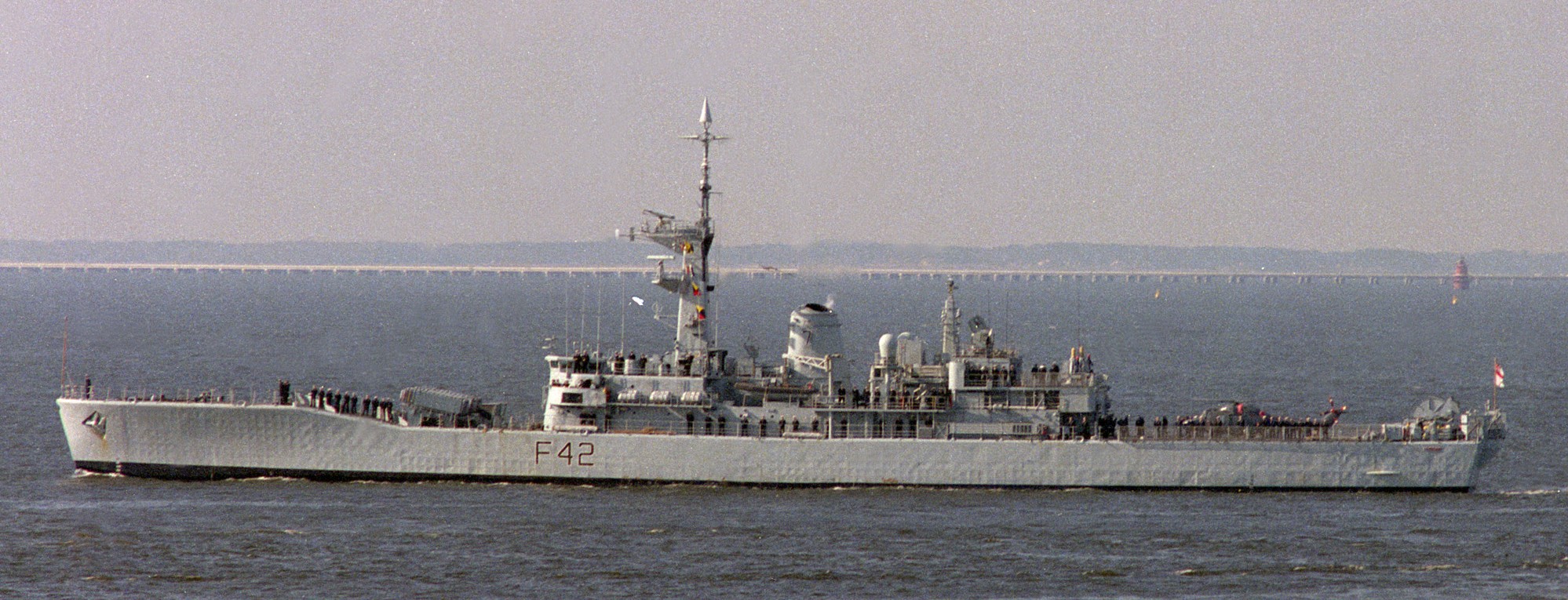 HMS Phoebe (F 42)  HMS Phoebe (F 42)  HMS Argonaut (F 56)  HMS Argonaut (F 56)  HMS Andromeda (F 57)  HMS Andromeda (F 57)  HMS Andromeda (F 57) 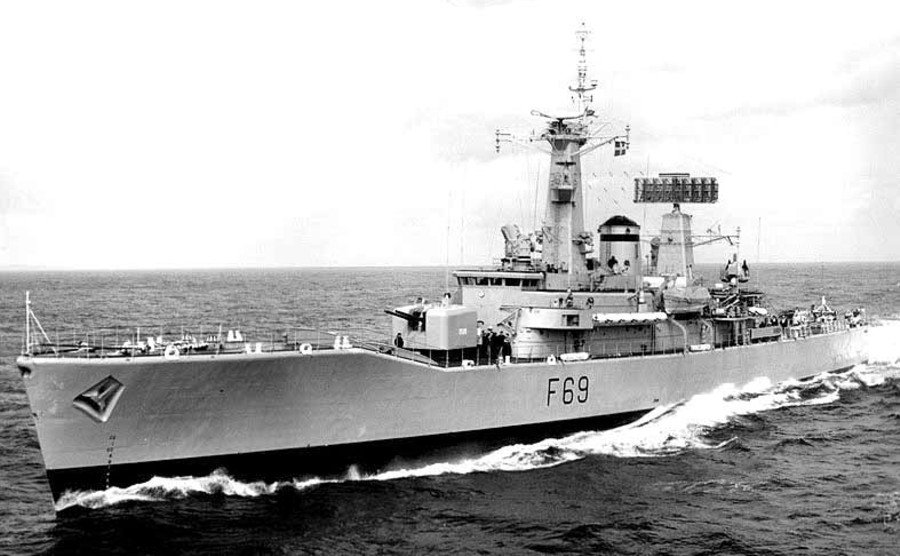 HMS Bacchante (F 69)  HMS Scylla (F 71) 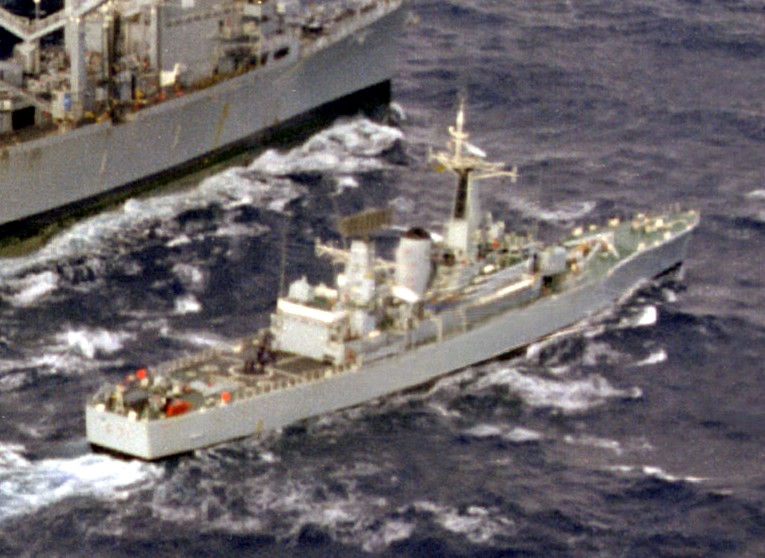 HMS Scylla (F 71)  HMS Apollo (F 70)  HMS Ariadne (F 72) 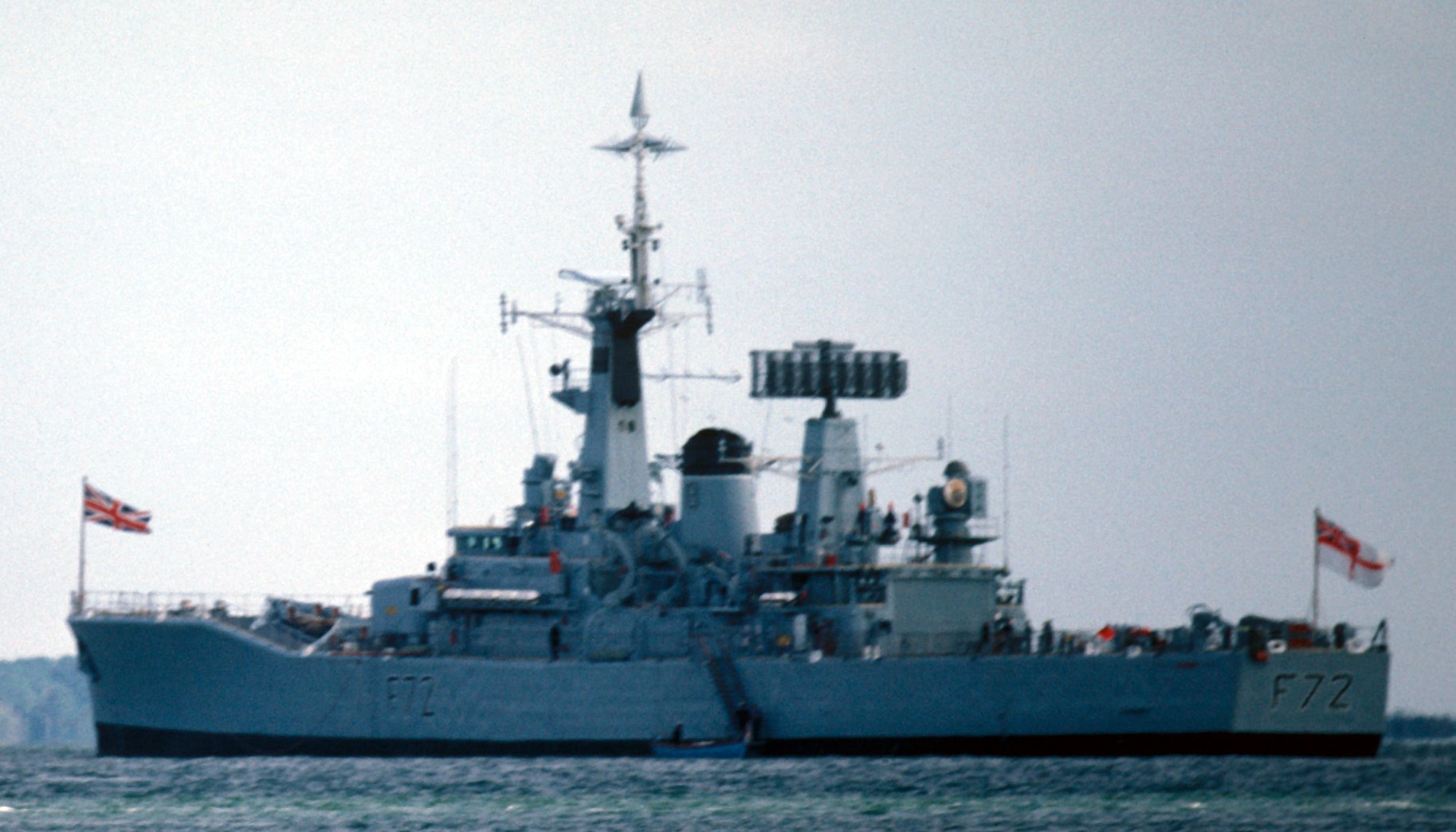 HMS Ariadne (F 72)  Leander class Frigate / Batch 3 (Seawolf conversion)  Leander class Frigate / Batch 3 (Seawolf conversion) |
|
|
|
|
seaforces.org
|
Royal
Navy start page
| |
